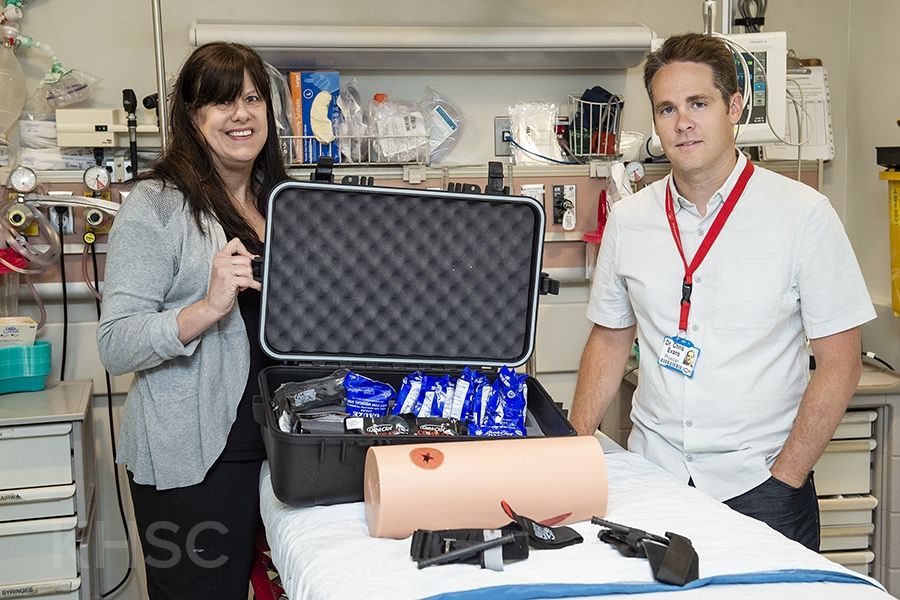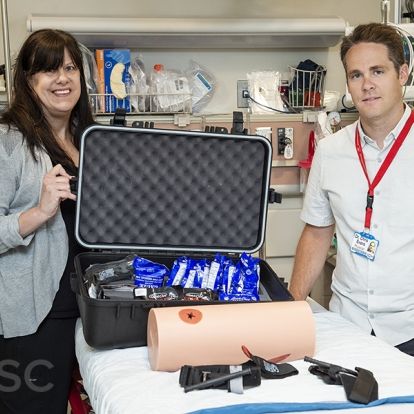Effective immediately masking is required for everyone when present on all inpatient units, in the Emergency Department (ED), the Urgent Care Centre (UCC), and the Children’s Outpatient Centre (COPC).

Saving lives is the specialty of trauma experts at Kingston Health Sciences Centre and now they’re taking the basics of one of their most critical skills—stopping uncontrollable bleeding—directly to the public. The goal is to train people to act quickly in emergencies such as a mass shooting or explosive event.
“Uncontrolled bleeding is the number one cause of preventable death from trauma,” says Dr. Chris Evans, Medical Director for the Trauma Program at the KGH site. “Deaths from severe bleeding tend to occur within minutes and it’s usually bystanders and first responders like police officers and fire fighters who are on scene and in a positon to manage significant bleeding.”
Enter Stop the Bleed, an initiative designed to speed up the response time by training members of the general public to control bleeding, whether they rely on their own two hands or a full trauma first aid kit. Akin to teaching people to perform CPR, Stop the Bleed equips people to manage a massive bleed in those critical moments of a traumatic event.
“The more people who know how to compress or pack a wound and apply a tourniquet, the greater the chances a patient will survive,” says Cathy Dain, Advanced Practice Nurse for the Trauma Program. “While people worry that touching the wound will cause more pain or introduce infection, it’s important to understand that these are secondary concerns to saving the patient from bleeding to death.”
Stop the Bleed is an initiative of the American College of Surgeons and the Hartford Consensus, which is a body of recommendations stemming from mass casualty events in the United States. The Consensus is guided by the principle that no one should die from uncontrolled bleeding. In 2017, Sunnybrook Health Sciences Centre became the first hospital in Canada to offer Stop the Bleed training to the public.
Now, KHSC is doing likewise. The Trauma Program has a core group of instructors who are working to raise awareness and train local first responders and hope to target key venues and personnel in the community like secondary schools, municipal services and popular tourist attractions where staff could be the first people to respond to an emergency.
“The public needs to appreciate that they may be able to save a life by learning various basic techniques to control bleeding,” says Dr. Evans.
For more information about Stop the Bleed, visit their website at www.bleedingcontrol.org.
Gallery


Compressing, packing and applying a tourniquet to a wound are all part of Stop the Bleed training provided by KHSC Trauma Program staff including Cathy Dain, Advanced Practice Nurse, and Dr. Chris Evans, Program Medical Director.



